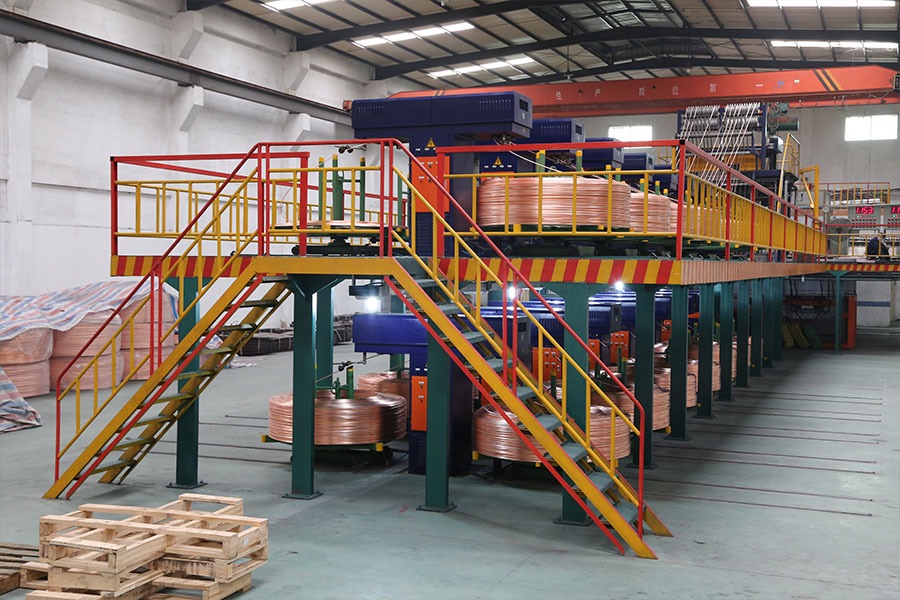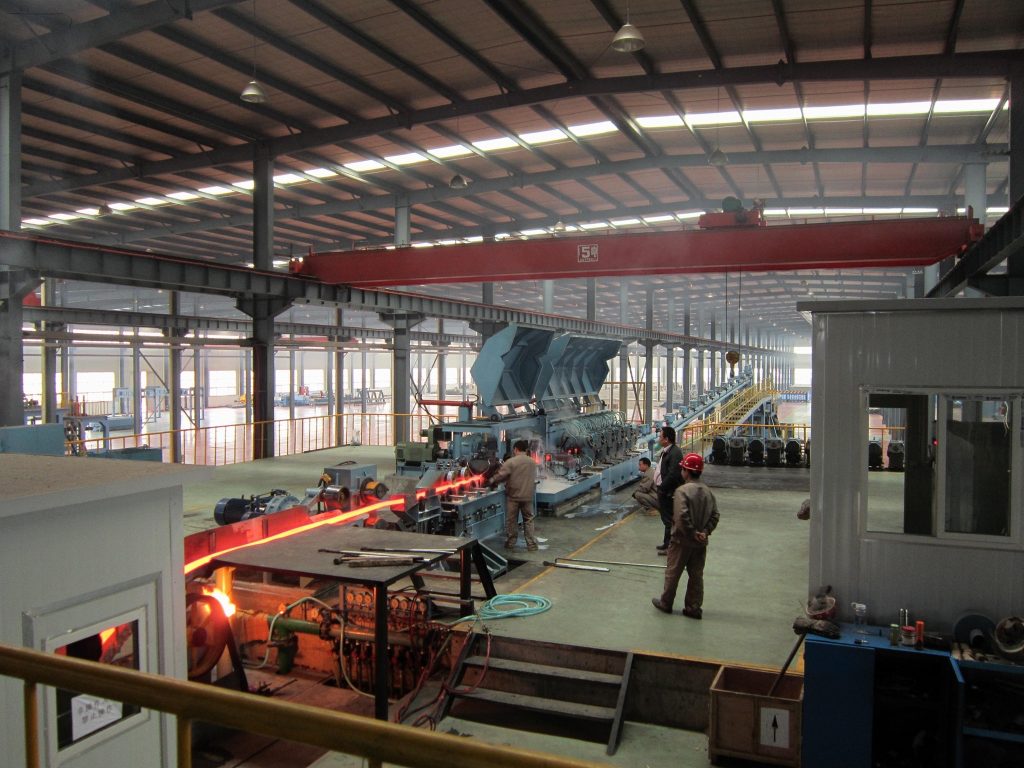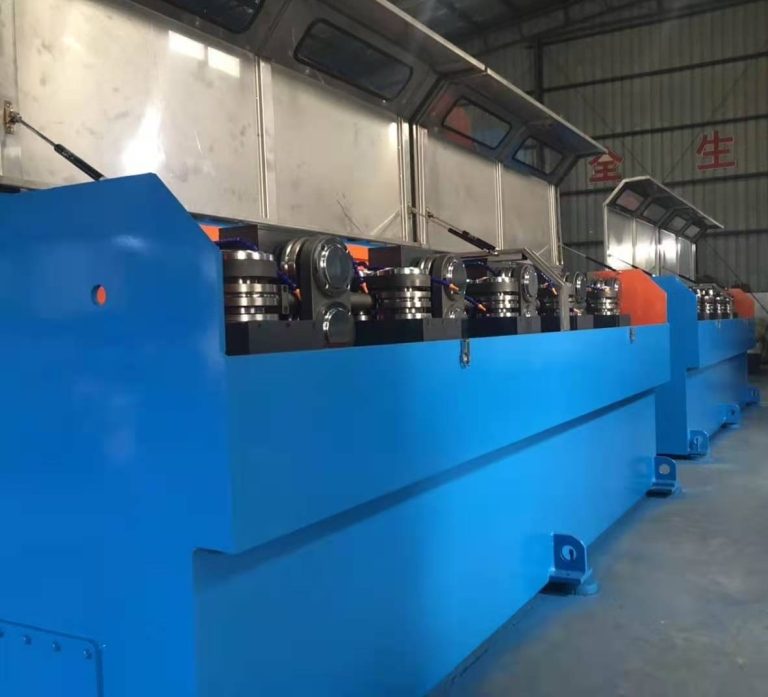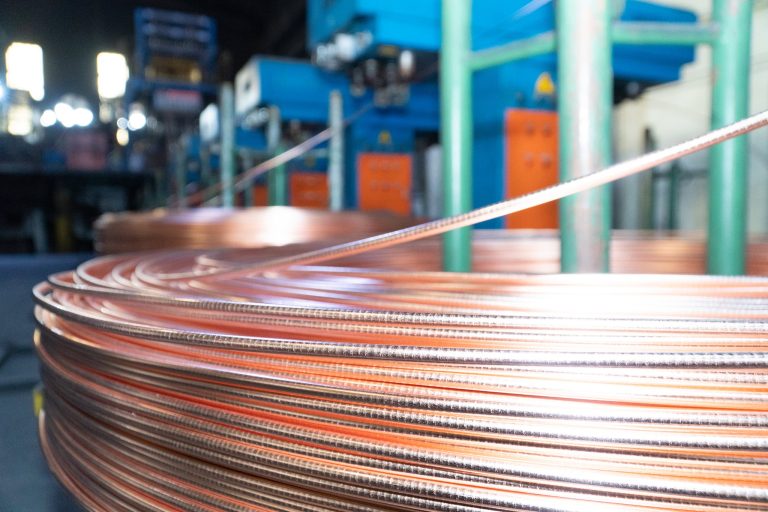Copper rods are the main raw materials used in the production of wire and cable industries, and can generally be divided into low oxygen copper rods and oxygen free copper rods. Many people often confuse these two in use, leading to inappropriate usage. So, do you know the specific differences between low oxygen copper rods and oxygen copper rods?
1. Different production processes
- Low oxygen copper rod are made from copper as raw material and produced by continuous casting and rolling method to produce copper rods with an oxygen content between 200 (175) and 400 (450) ppm. The production process involves melting the metal in a vertical furnace, and the copper liquid enters the closed mold cavity through a holding furnace, chute, and intermediate ladle. It is cooled by a higher cooling intensity to form a billet, which is then rolled multiple times.
- Oxygen free copper rod are generally produced by upward continuous casting method, with an oxygen content generally below 20 ppm. Oxygen free copper rod is pure copper that does not contain oxygen or any deoxidizer residue, but in reality, it contains very trace amounts of oxygen and some impurities. According to the standard, the oxygen content shall not exceed 0.02%, the total impurity content shall not exceed 0.05%, and the purity of copper shall be greater than 99.95%. Its production process involves melting the metal in an induction furnace and continuously casting it through a graphite mold, followed by cold rolling or cold working.


2. Different organizational structures
Low oxygen copper rod is a hot worked structure, and recrystallization forms have already appeared in 8mm rod. From an organizational perspective, oxygen in low oxygen copper rods exists in the state of copper oxide near the grain boundaries.
Oxygen free copper rod is a cast structure with coarse grains, which is why the recrystallization temperature of oxygen free copper rod is higher and requires higher annealing temperature. Due to the fact that recrystallization occurs near the grain boundaries, the grain size of oxygen free copper rods is coarse and can even reach a few millimeters, resulting in fewer grain boundaries. Even through drawing deformation, the grain boundaries are relatively small compared to low oxygen copper rods, so higher annealing power is required.
3.Different oxygen content
The oxygen content of low oxygen copper rods is generally between 200 (175) -400 (450) ppm, so oxygen is inhaled in the liquid state of copper. Good copper rods generally have an oxygen content controlled at around 250 ppm.
The oxygen content of anaerobic copper rods is below 10-20 ppm, but currently some copper bar manufacturers can only achieve below 50 ppm. After being held in liquid copper for a considerable period of time, oxygen is reduced and removed. Typically, the oxygen content of this rod is below 10-50 ppm, and can even be as low as 1-2 ppm.
4. Different drawing performance
Low oxygen copper rods are more suitable for the performance of enameled wires, such as softness, rebound angle, and winding performance, but low oxygen copper rods are relatively more demanding for wire drawing conditions. Similarly, if the stretching conditions are not good, a regular oxygen free copper rod can be stretched, while a good low oxygen rod will break the wire; But if placed under good stretching conditions, the same rod may be able to stretch up to 0.05 under low oxygen conditions, while ordinary oxygen free copper rods can only stretch up to 0.1. The low-temperature grade oxygen free copper rod in low-temperature superconducting wires has a spacing of only 0.001mm between its fine wires.
5. Different specific uses
Oxygen free copper rods are generally produced using electrolytic copper, with better electrical resistivity and processing performance than low oxygen copper rods. Therefore, for the production of high demand electrical materials, oxygen free copper rods are generally used, such as for enameled wires. Oxygen free copper rods have lower resistance and are superior to low oxygen copper rods when used in motor heating situations. Nowadays, low oxygen copper rods are mainly used for electrical products with large specifications and low resistance requirements; Use oxygen free copper rods for small specifications and high resistance requirements. However, audio cables generally prefer to use oxygen free copper rods, which is related to the fact that oxygen free copper rods are single crystal copper and low oxygen rods are polycrystalline copper.



